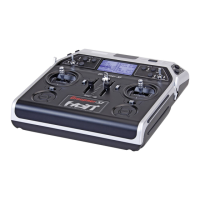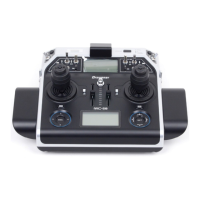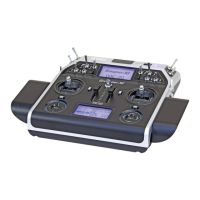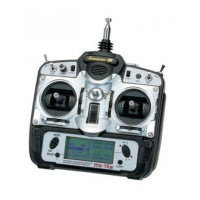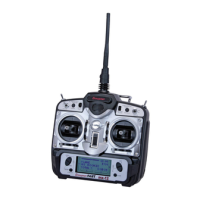280
Programming examples - Winged models
mc-16 and mc-20 HoTT programming
Preparatory measures based on the example of a winged model
Programming models in an mc-16 HoTT or
mc-20 HoTT transmitter …
… is easier than it may appear at rst!
The primary prerequisite for “clean” programming, and
this applies not only to the
mc-series but is also a
principle for all programmable transmitters, is a me-
chanically correct installation of all remote control com-
ponents in the model! Therefore, it should be ensured
no later than on connection of the linkages that the
servos are in their respective neutral position and their
rudder lever is also in the desired position. O therwise
you should loosen the rudder and re-fasten it with an
offset of a few lobes. If servos are positioned with the
help of a servo tester, e. g. RC tester, No. 2894.12,
then the “correct” positions can be determined very
easily.
The possibility of changing the neutral position of a
servo in practically every modern transmitter is only
intended for ne-tuning. Greater deviations from “0”
can result to further asymmetries in the course of
the further signal processing in the transmitter. In the
same manner: A car with a bent chassis does not get
any straighter if only the steering wheel is trimmed to
“straight”!
An additional important point is the adjustment of the
rudder paths: This should take place through a corre-
sponding adjustment of the steering points, insofar as
possible. Ultimately this is far more efficient than exten-
sive efforts with the path adjustments in the transmitter!
In this case: Path adjustments serve first and foremost
for to compensate for the manufacturer-stipulated
tolerances for the servos and their ne-tuning, and less
for the compensation of carelessness.
If two separate aileron servos are used for a winged
model, the ailerons, controlled through the correspond-
ing activated wing mixer – see the following pages – can
be assigned with both the flap function and raised with
the brake flaps – however this would make more sense
in a glider or electro glider than in a motor model.
In this case the rudder arms – starting from the neutral
position – should be tilted forward one lobe, pointing
toward the nose, set to the respective servo.
The mechanical differentiation achieved through this
asymmetric assembly contributes to the fact that the
brake effect of the elevated ailerons increases with
their deflection and, therefore, does normally require a
greater path upward than downward.
Correspondingly, when planning to operated separately
controlled flap servos, they should also be integrated
into a crow system. Since the brake effect of this flap
position referred to as a “crow position” is influenced
less by the elevated ailerons than the downward de-
flection of the flaps, the rudder arms should be installed
somewhat toward the rear in this case, tilted toward
the trailing edge.
As a result, there is a greater available path for the
downward deflection. With such a combination of
lowered flaps with raised ailerons, however, the latter
should only be elevated moderately, because they have
more of a stabilizing and controlling function than a
braking function in this type of crow system.
A “tip” for seeing the brake effect in this connection: lift
the flaps and look over and under the surface from the
front. The greater the projected surface of the protrud-
ing rudder, the greater the brake effect.
Outboard ailerons
Inboard camber-changing flaps
(Similar asymmetric installation of rudder arms can be
meaningful, e. g. for open-cowl flaps or landing flaps,
even in a motorized model.)
If a model is completed and mechanically attuned in
this respect, you can basically begin with the program-
ming of the transmitter. The following exam ples, an
attempt is made to follow the practice of first describ-
ing the general basic settings and then fine-tuning or
specializing them in the subsequent steps. After the
initial flight and over the course of the further flying in
of a model, it may be necessary to occasionally adjust
some of the settings. As a pilot’s experience increases,
however, so does the desire for enhancements and
expansions of settings.

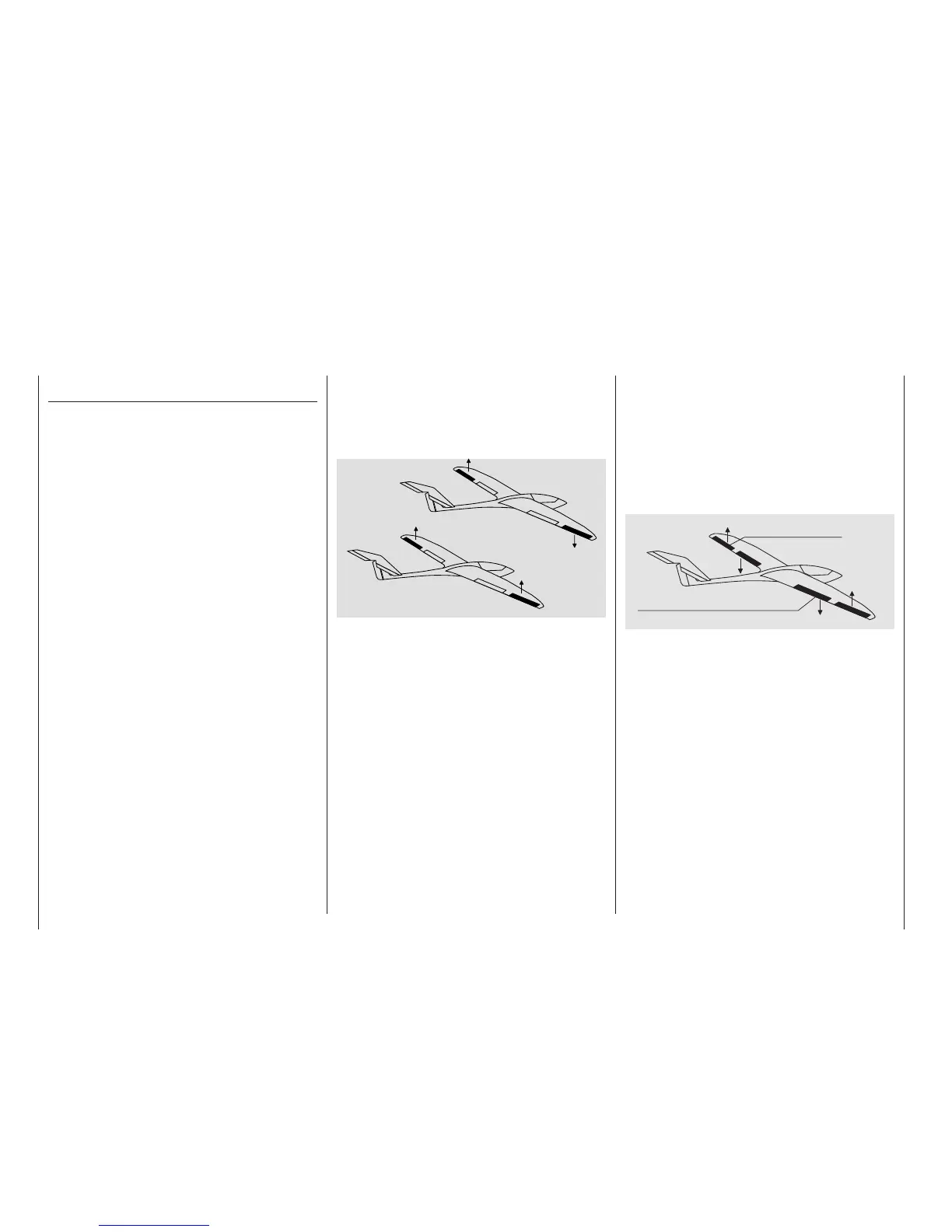